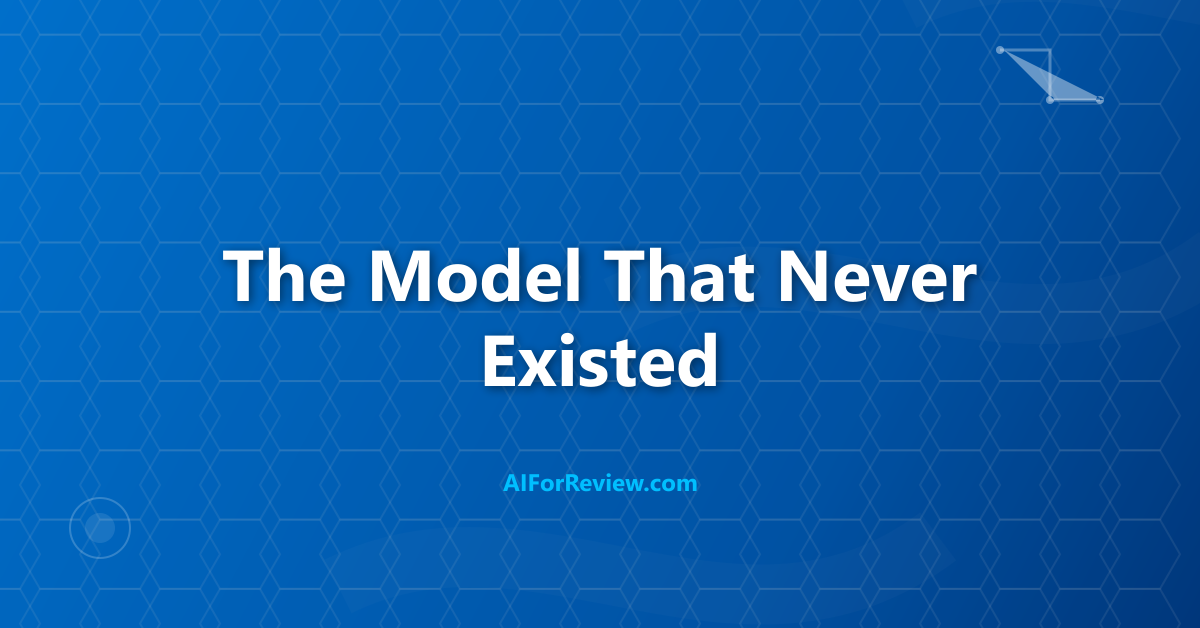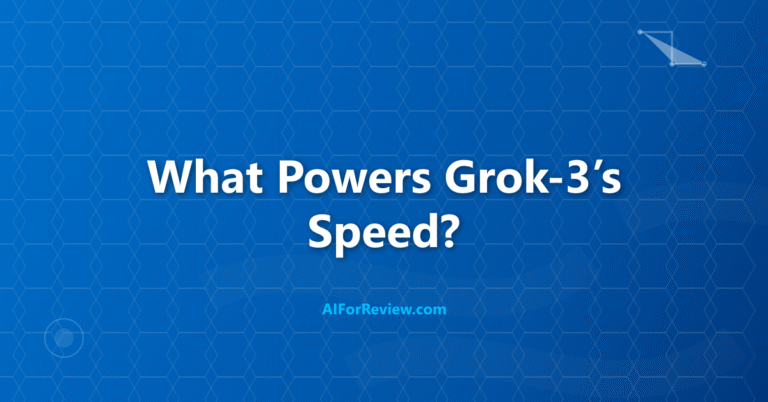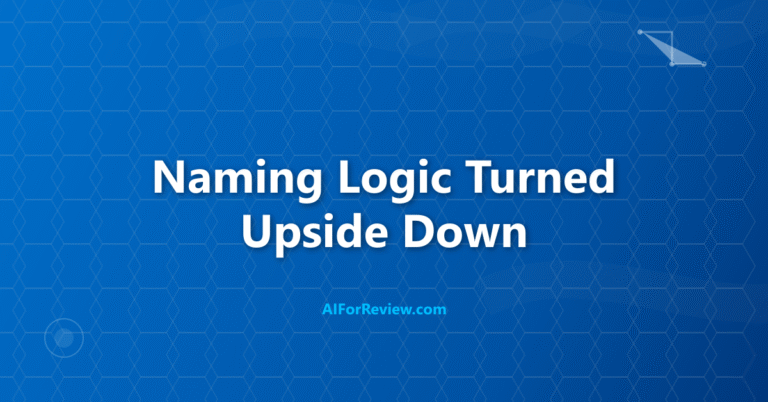OpenAI skipped GPT-o2, moving straight from o1 to o3, and this unexpected gap has left many of us questioning what really happened. The missing o2 is not just about a number, it is a story of trademark hurdles, technical setbacks and a bold move that changed how we see OpenAI’s model releases. Discover why this decision matters for anyone following the evolution of AI and what it reveals about the challenges behind the scenes of the world’s most advanced models.
See, to me, the names of these AI models have always been confusing, and now the missing o2 model represents one of the most interesting gaps in their release history. The jump from o1 to o3 broke user expectations and created lasting confusion about OpenAI’s naming strategy that continues to affect how people understand their model lineup.
The absence of o2 is not accidental or due to superstition like some companies skipping version 13. OpenAI made deliberate decisions that led to abandoning the o2 designation, and understanding these reasons reveals important insights about how AI companies manage product development and branding challenges.
If you read my earlier posts about OpenAI’s confusing naming patterns with GPT-4.1 versus GPT-4o, you will see that the missing o2 fits a broader pattern of inconsistent naming decisions that prioritize marketing and legal considerations over logical progression.
The Trademark Problem That Changed Everything
The primary reason OpenAI skipped o2 relates to trademark concerns with O2, the major UK telecommunications company owned by Telefónica. O2 holds extensive trademark protections across multiple technology categories that could potentially conflict with an AI model named “o2.”
O2’s trademark portfolio covers telecommunications, digital services, and technology platforms. While AI models might seem unrelated to mobile phone services, the broad scope of modern trademark law creates potential conflicts when companies use similar names for technology products.
OpenAI’s legal team likely advised against using “o2” to avoid any possibility of trademark disputes, licensing requirements, or legal challenges that could complicate the model’s release and marketing. The cost and complexity of resolving trademark issues would far exceed any benefit from maintaining sequential naming.
This trademark concern explains why OpenAI jumped directly to o3, creating a permanent gap in their numbering sequence that continues to confuse users who expect logical progression in model names.
Technical Development Issues with the o2 Prototype
Internal sources and development patterns suggest that OpenAI did develop an o2 prototype but encountered significant technical issues that made it unsuitable for public release. The o2 model likely suffered from performance problems that could not be resolved within reasonable time and resource constraints.
The o1 model introduced reasoning capabilities but had notable limitations in speed and cost efficiency. The o2 prototype was intended to address these issues while maintaining the reasoning improvements, but development revealed fundamental architectural challenges.
Likely o2 Development Problems:
| Issue Category | Problem Description | Impact on Release |
|---|---|---|
| Performance | Slower than o1 despite optimizations | Failed speed targets |
| Cost | Higher computational requirements | Economically unviable |
| Reliability | Inconsistent reasoning quality | Below release standards |
| Integration | Compatibility issues with existing systems | Technical debt concerns |
Rather than release a model that performed worse than o1 or only marginally better, OpenAI chose to skip o2 entirely and focus development resources on the more ambitious o3 model that could deliver meaningful improvements.
Strategic Positioning and Market Perception
OpenAI’s decision to skip o2 also reflects strategic thinking about market positioning and user perception. The company wanted to create clear differentiation between the o1 model’s limitations and their next-generation reasoning capabilities.
By jumping to o3, OpenAI signals that the new model represents a significant leap forward rather than an incremental improvement. This naming strategy helps manage user expectations and creates marketing advantages for the o3 release.
The gap also allows OpenAI to position o3 as a major breakthrough rather than just the next version in a sequence. This perception management becomes important when competing with other AI companies for attention and adoption.
Marketing Impact Analysis:
| Naming Strategy | User Perception | Marketing Advantage |
|---|---|---|
| Sequential (o1, o2, o3) | Incremental progress | Steady improvement |
| Gap Strategy (o1, o3) | Major breakthrough | Revolutionary advancement |
| Current Reality | Confusion and speculation | Mixed messaging |
The strategic positioning benefits come at the cost of user confusion, but OpenAI apparently decided the marketing advantages outweighed the naming consistency problems.
The Development Timeline That Reveals the Truth
Analyzing OpenAI’s development timeline and public statements reveals clues about what happened to o2 and why it never reached public release.
o1 was released in September 2024 with significant fanfare around its reasoning capabilities. However, user feedback quickly revealed limitations in speed, cost, and practical applicability for many use cases.
Development on o2 likely began immediately after o1’s release, focusing on addressing the most critical user complaints. The timeline suggests OpenAI spent approximately 2-3 months attempting to resolve o2’s technical issues before abandoning the project.
o3’s announcement in December 2024 came with performance claims that suggest it incorporates lessons learned from both o1’s limitations and o2’s failed development. The rapid progression from o1 to o3 indicates that o2’s problems led to a more ambitious redesign rather than incremental fixes.
Comparison with Other AI Companies’ Naming
OpenAI’s decision to skip o2 stands out when compared to how other AI companies handle model naming and versioning. Most companies maintain sequential numbering even when individual versions have problems.
Anthropic follows sequential numbering with Claude 1, Claude 2, Claude 3, and Claude 3.5. Even when individual releases have issues, they maintain the logical progression to help users understand model relationships.
Google uses Gemini 1.0, Gemini 1.5, Gemini 2.0, following decimal numbering that clearly indicates incremental improvements and major releases.
Meta uses LLaMA 2, LLaMA 3, with clear generational progression that helps users understand capability improvements over time.
OpenAI’s willingness to skip numbers makes their naming system uniquely confusing in the AI industry and sets a problematic precedent for future releases.
What This Means for Future OpenAI Releases
The missing o2 establishes a precedent that OpenAI will skip model numbers when convenient, making it difficult to predict future naming patterns or understand model relationships.
Future releases might skip additional numbers if OpenAI encounters similar trademark, technical, or strategic issues. This unpredictability makes it harder for developers to plan integration strategies or understand model progression.
The precedent also suggests that OpenAI prioritizes marketing and legal considerations over naming consistency, which could lead to more confusing naming decisions in future releases.
Users should expect that OpenAI’s model names will not follow logical sequences and should focus on actual capabilities rather than version numbers when making technology decisions.
Practical Implications for Developers and Users
The missing o2 teaches important lessons about relying on model naming for understanding AI capabilities and planning technology adoption.
Never assume that higher version numbers always indicate better performance or newer release dates. OpenAI’s naming patterns do not follow logical rules that can be used for decision-making.
Focus on actual model capabilities, performance benchmarks, and release dates rather than version numbers when choosing between AI models. The name tells you less about the model than you might expect.
Plan for naming inconsistencies in your applications and documentation. If you build systems that reference AI models by name, account for the possibility that expected versions might not exist.
The Broader Pattern of AI Industry Naming Problems
OpenAI’s missing o2 reflects broader problems with AI model naming across the industry. Companies prioritize marketing appeal and legal safety over logical naming conventions, creating confusion for users and developers.
The rapid pace of AI development makes traditional software versioning inadequate for communicating model capabilities and relationships. Companies need better naming systems that balance marketing needs with user understanding.
Industry standards for AI model naming would help reduce confusion, but competitive pressures make coordination between companies unlikely. Users must adapt to inconsistent naming rather than expecting logical patterns.
Key Takeaways for Understanding AI Model Names
The missing GPT-o2 illustrates why AI model names should not be your primary way of understanding model capabilities or relationships. Version numbers in AI often reflect marketing and legal considerations rather than technical progression.
Always research actual model capabilities, release dates, and performance characteristics rather than making assumptions based on naming patterns. The AI industry has not established consistent naming standards that users can rely on.
Expect more naming inconsistencies as AI companies balance technical development, legal requirements, and marketing goals. The missing o2 is likely the first of many naming gaps and inconsistencies in AI model releases.
Focus on practical testing and evaluation rather than version numbers when choosing AI models for your projects. The best model for your needs might not have the highest or most logical version number.
Frequently Asked Questions
Why did OpenAI skip the GPT-o2 model and go straight to o3
OpenAI skipped the o2 name to avoid trademark conflicts with the UK telecommunications company O2, and also because internal development issues made the o2 prototype unsuitable for release, so the company chose to move directly to o3.
Does the missing o2 model mean there is a gap in OpenAI’s technology
The missing o2 model does not indicate a technology gap, but rather reflects branding and development decisions, as OpenAI continues to advance its reasoning models with o1 and o3.
How does the jump from o1 to o3 affect users and the AI community
The jump from o1 to o3 has caused confusion for users expecting sequential releases, but it also highlights how OpenAI manages product development and branding challenges in a fast-moving industry.



